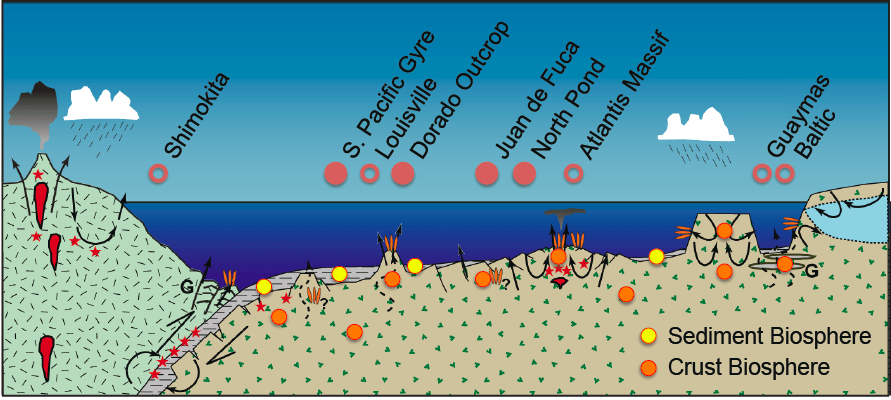C-DEBI field sites globally span a range of subseafloor environments, e.g., seafloor below oligotrophic ocean gyres, ridge systems and ridge flanks, and seamounts where fluids flow into or discharge from the subseafloor, with variations in sediment cover, rock type, crustal age, and fluid temperatures, among other environmental conditions that impact the deep biosphere. C-DEBI researchers access these sites using numerous oceanographic technologies, including ships, submersibles, drilling, and observatories.
In the initial phase of C-DEBI, exploration of microbial life, geochemistry and hydrogeology in the sediment and igneous crust was focused at four primary field sites – Juan de Fuca Ridge flank, South Pacific Gyre, North Pond, and Dorado Outcrop. Studies combined a mixture of field, laboratory, and modeling methods. These studies benefitted from application of innovative methods and tools, capitalizing on the unprecedented scheduling of three ocean drilling expeditions within 18 months of each other, all with subseafloor microbiology as a major focus. Significant contributions have also been made at additional sites located around the world, including the Louisville Seamounts, Shimokita coalbeds, Baltic Sea basin, Atlantis Massif, and Guaymas Basin.



